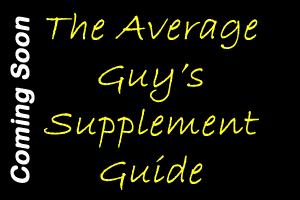One of recent articles talked about "Sitting Down on the Job" and the hazards associated with sitting at a desk. In today's article I am sending along some workplace stretches that you can easily add into your day. Not all stretches need to be done at once, but every couple of hours you should get up and move a little. Take 5 minutes and pick a few of these stretches to do and you will feel much better at the end of your work day.
WORKPLACE STRETCHES:
Warm up by lifting shoulders to ears; hold for 5-10 seconds then lower slowly. Roll your shoulders up, back and down 5-10 times.
Seated Forward Bend:
Sit on the edge of your chair. Feet flat on floor. Lean forward until chest over knees. Let arms hang loose, fingertips on floor.
Seated Trunk Rotation:
Sitting – cross right knee over left knee. Place left hand on outside of right thigh and right hand on your armrest. While sitting straight, gently twist towards the right and look over your shoulders. Repeat other direction.
Neck Stretch:
Reach left hand over your head and gently rest on right side of your head. Stabilize your right side by grasping seat of your chair with your right hand and gently pull your head away from your right shoulder with your hand to bring the left ear towards the left shoulder. Face straight ahead and repeat other side.
Seated Arm Stretch:
With your left hand to assist, bring your right arm with elbow bent across your chest, parallel to the floor. Use your left hand to gently pull your right arm across your body. Repeat on other side.
Seated Lateral Trunk Flex:
Sit well back in chair. Reach both hands overhead and interlock fingers with palms facing up to ceiling. Slowly lean over towards the right side, pause and return. Keep both feet on floor.
Wrist Flexor Stretch:
With assistance of the left hand, gently draw the fingers on the right hand up towards the ceiling and then gradually straighten elbow while maintaining a stretch on the wrist.
Wrist Extensor Stretch:
With assistance of the left hand, gently bend the wrist so that the fingers are pointing down towards the floor and gradually straighten the elbow while maintaining a stretch on the wrist.
Standing Shoulder and Elbow Extension:
Stand facing the chair and reach behind with both arms, grasp hand interlocking the fingers. Lift both arms away from he body while keeping the elbows straight and pause. Release and repeat.
Standing Spinal Extension:
Stand facing the chair and place your fist or the heel of both hands on the back of your hips. Gently press into your hips and lift your chest upwards. Keep eyes straight ahead and chin tucked in. Pause and return to starting position. Repeat. Breathe out as your lean back and in as you return upright.
Standing Hip/Knee/Quadricep Stretch:
Stand holding onto the back of your chair for balance. Grasp your right ankle with your right hand. Keep your hips, shoulders and face straight ahead and gently pull your heel towards your hips until you feel a gently stretch across the front of your hip and along the front of your thigh. Keeps your abs pulled in. Repeat on other leg.
GREATER THAN ONE THIRD OF THE WORKING POPULATION SAY THEY LACK ENERGY EITHER THROUGH OUT THE DAY OR IN THE AFTERNOON AND EVENING. THIS LACK OF ENERGY IS A FUNCTION OF BRAIN AND MUSCULAR ACTIVITY. BRAIN AND MUSCLES NEED WATER, GLUCOSE AND OXYGEN. TAKE REGULAR BREAKS AND MOVE MORE DURING THE WORK DAY. BEST OF ALL WORK OUT OR EXERCISE REGULARLY TO REDUCE THE RISK OF WORK-RELATED INJURY AND IMPROVE YOUR OVERALL HEALTH AND FITNESS. IT PAYS OFF-IN GREATER HEALTH AND WEALTH.
Till next time,
Narina
